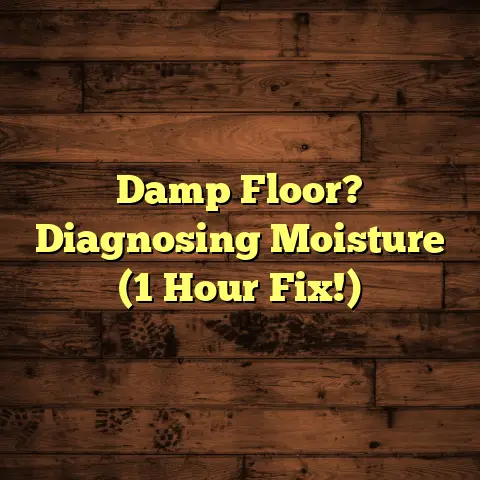Is Swiffer Safe For Wood? (2 Minute Test!)
Imagine this: Sarah just bought her dream home.
Gorgeous hardwood floors stretch throughout.
She’s excited to keep them spotless, but…
She’s heard conflicting opinions about Swiffer.
Should she stick to traditional mopping? Or trust the convenience of Swiffer?
It’s a classic dilemma, isn’t it? Modern cleaning vs. tried-and-true methods.
I’ve been in the flooring business for over 15 years.
I’ve seen floors ruined by well-intentioned cleaning.
And I’ve seen floors thrive with simple care.
So, let’s explore the truth about Swiffer and wood.
We’ll look at the science, the risks, and the benefits.
And I’ll even share a 2-minute test you can do yourself!
2. Understanding Swiffer Products
Okay, so what exactly is a Swiffer?
It’s more than just a mop, right?
It’s a whole system of cleaning tools and solutions.
Let’s break down the main players:
- Swiffer WetJet: Sprays cleaning solution as you mop.
- Swiffer Sweeper: Uses dry or pre-moistened pads.
The key is in the pads and the solutions.
The pads are usually made of synthetic fibers.
Designed to trap dirt and grime.
The solutions? That’s where things get interesting.
They often contain detergents, solvents, and fragrances.
All designed to dissolve dirt and leave a fresh scent.
The big appeal? Convenience, plain and simple.
Swiffer is quick, easy, and requires minimal effort.
Perfect for busy homeowners (like most of us!).
But, does convenience come at a cost?
That’s what we’re here to find out!
3. The Science Behind Hardwood Flooring
Before we judge Swiffer, let’s talk about wood.
Specifically, hardwood flooring.
What is it, and why is it so special?
Hardwood comes from deciduous trees (like oak, maple, etc.).
It’s known for its durability and natural beauty.
But, not all hardwood is created equal.
Different types of wood have different hardness levels.
(Think Janka hardness scale – Oak is around 1290!)
And different finishes offer different levels of protection.
- Polyurethane: A common, durable finish.
- Oil-based: Penetrates the wood, offering a natural look.
- Wax: A traditional finish, requiring regular maintenance.
The finish is crucial when it comes to cleaning.
It’s the barrier between the wood and the cleaning solution.
Hardwood care is all about gentle cleaning and protection.
Avoid harsh chemicals, excessive water, and abrasive scrubbers.
Common myths? “More is better” when it comes to cleaning.
Or, “Vinegar is a universal cleaner” (it’s not!).
Understanding your floor’s specific needs is key.
4. The Swiffer Safety Debate
Alright, let’s get to the heart of the matter:
Is Swiffer actually safe for wood floors?
The internet is full of conflicting opinions.
Some people swear by it, others warn against it.
So, what’s the truth?
Arguments FOR Swiffer:
- Convenience: Quick and easy cleaning.
- Light Moisture: Less water than traditional mopping.
- Gentle Pads: Non-abrasive, won’t scratch the finish.
Arguments AGAINST Swiffer:
- Chemical Solutions: May damage or dull the finish.
- Residue Buildup: Can leave a sticky film over time.
- Moisture Retention: Can seep into seams and cause warping.
I’ve seen the damage firsthand.
Dull finishes, cloudy spots, and even warped boards.
But I’ve also seen floors that seem to tolerate Swiffer just fine.
It really depends on the type of wood, the finish, and the frequency of use.
Some flooring manufacturers do warn against using Swiffer.
They recommend specific cleaning products designed for wood.
Others are more neutral, saying it’s okay if used properly.
The key takeaway? Proceed with caution.
5. The 2-Minute Test
Okay, so how do you know if Swiffer is safe for your floors?
That’s where the 2-Minute Test comes in!
It’s a quick and easy way to test a small, inconspicuous area.
Here’s how to do it:
- Choose a Spot: Pick a hidden area (under a rug, in a closet).
- Swiffer Time: Use your Swiffer WetJet or Sweeper on that spot.
- Wait 2 Minutes: Let the solution sit for a couple of minutes.
- Wipe Clean: Wipe the area with a clean, dry cloth.
- Inspect: Check for any changes in texture, sheen, or color.
What are you looking for?
- Dullness: Has the finish lost its shine?
- Stickiness: Does the surface feel tacky?
- Discoloration: Has the wood changed color?
- Residue: Can you see a visible film left behind?
If you notice any of these signs, stop using Swiffer immediately!
It’s not worth risking damage to your entire floor.
This test is not foolproof, but it’s a good starting point.
6. Comparative Analysis
So, Swiffer vs. traditional cleaning methods?
Let’s break down the pros and cons of each:
Swiffer:
- Pros: Convenience, speed, ease of use.
- Cons: Potential for chemical damage, residue buildup, cost of refills.
Traditional Mopping (with water and mild soap):
- Pros: Gentler on the finish, more environmentally friendly, cheaper.
- Cons: More time-consuming, requires more effort, risk of over-wetting.
Vinegar Solutions:
- Pros: Natural cleaner, good for removing dirt and grime.
- Cons: Can dull some finishes, strong odor, not suitable for all wood types.
Alternative Modern Cleaning Solutions:
There are tons of wood-specific cleaners on the market.
Look for pH-neutral formulas designed for hardwood.
Brands like Bona, Murphy Oil Soap (use sparingly!), and Method offer great options.
Always read the labels and follow the manufacturer’s instructions.
7. Real-Life Case Studies
I’ve seen so many different outcomes over the years.
Here are a few real-life examples:
- Case 1: The Quick Cleaner: Sarah used Swiffer WetJet weekly. After a year, her floors looked dull and cloudy. She had to refinish them, costing thousands.
- Case 2: The Cautious User: John used Swiffer Sweeper (dry pads) to dust his floors. No issues after 5 years.
- Case 3: The Vinegar Experimenter: Maria used a vinegar solution and her floor lost it’s shine. She had to have it professionally polished to restore it.
The key takeaway?
Consistency and caution are crucial.
What works for one person might not work for another.
Pay attention to your floors and adjust your cleaning routine accordingly.
8. Conclusion
So, is Swiffer safe for wood floors?
The answer, as you probably guessed, is “it depends.”
It depends on your wood type, your finish, and how you use it.
Sarah’s dilemma is a common one.
We all want clean floors, but we don’t want to damage them.
My advice? Proceed with caution.
Do the 2-Minute Test.
Consider alternative cleaning methods.
And always prioritize gentle care over convenience.
The world of cleaning products is constantly evolving.
But the principles of hardwood care remain the same.
Protect your investment, treat your floors with respect.
And they’ll reward you with years of beauty and durability.
Happy cleaning!





